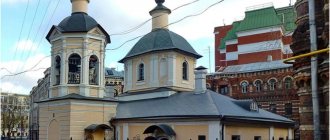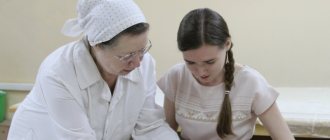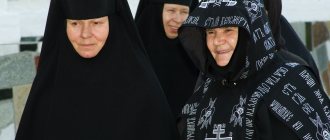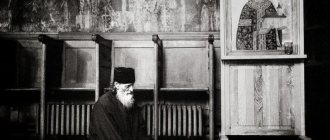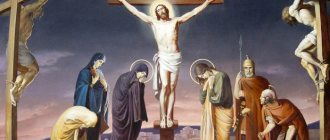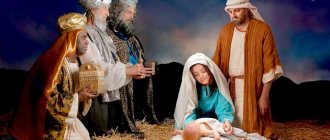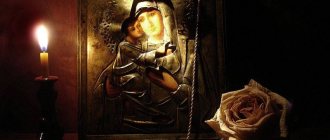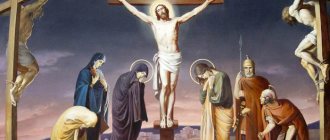The monastery is headed by the sacred archimandrite - the ruling bishop or (if the monastery is stauropegial) the Patriarch himself.
However, the monastery is directly controlled by the governor ( this can be an archimandrite, abbot, or hieromonk). In ancient times he was called the builder, or abbot. The convent is governed by an abbess .
Due to the need for a clearly organized monastic life (and monasticism is a spiritual path, so verified and polished by centuries of practice that it can be called academic), everyone in the monastery bears a certain obedience.
The first assistant and deputy governor is the dean . He is in charge of all worship services and the fulfillment of statutory requirements. It is to him that people usually refer regarding the accommodation of pilgrims coming to the monastery.
An important place in the monastery belongs to the confessor, who spiritually cares for the brethren. Moreover, this does not have to be an old man (both in the sense of age and in the sense of spiritual gifts).
From the experienced brethren the following are selected:
- treasurer ( responsible sacristan ( responsible housekeeper ( responsible
- cellarer (responsible for storing and preparing food),
- hotel ( responsible
In women's monasteries, these obediences are carried out by the nuns of the monastery
Rules of conduct in the monastery
The monastery is a special world. And it takes time to learn the rules of monastic life.
When you come to the monastery as a pilgrim or worker, remember that in the monastery they ask for a blessing for everything and strictly fulfill it.
You cannot leave the monastery without a blessing.
They leave all their sinful habits and addictions (wine, tobacco, foul language, etc.) outside the monastery.
Conversations are only about spiritual things, they do not remember about worldly life, they do not teach each other, but they know only two words - “forgive” and “bless”.
Without grumbling, they are content with food, clothing, and sleeping conditions.
They do not go to other people’s cells, except when they are directed by the abbot. At the entrance to the cell they say aloud a prayer: “Through the prayers of our holy fathers, Lord Jesus Christ, Son of God, have mercy on us” (in the convent: “Through the prayers of our holy mothers...”). They do not enter the cell until they hear from behind the door: “Amen.”
They avoid free speech, laughter, and jokes.
When working on obediences, they try to spare the weak person who works nearby, covering with love the errors in his work.
Unlike in the world, when greeting, people do not take each other’s hands.
Instead of “thank you,” it is customary to say “God bless.”
When sitting down at the table in the refectory, they observe the order of precedence. The prayer said by the person serving the food is answered “Amen”, the table is silent and listens to the reading.
They are not late for divine services, unless they are busy with obedience.
The sorrows encountered in general obediences are endured humbly, thereby gaining experience in spiritual life and love for the brethren.
What positions did monks have in medieval monasteries?
Let's start with the most earthly monastic position.
A cellarer is a caretaker or administrator of a monastery. The larger the monastery, the more important the position and the more assistants the cellarer was entitled to. The name of the position comes from the Latin cella - “pantry”, “barn”.
The cellarer was one of the full-fledged monks, and there was another category (lower class) - lay brothers.
Kelari appeared in Russian monasteries in the 11th century. The position was introduced into the charter by Theodosius Pechersky. The difference between an Orthodox cellarer is that he combines the positions of caretaker and refector. And this duality is very interesting. After all, if the Catholic cellarer is a figure of the highest order, then the refector is part of the lower class and simultaneously performs the functions of a bell ringer and a watchman.
Converses belonged to the lay group and were usually eaten separately from the monks. Usually illiterate, they did physical work so that the monks could devote more time to service and prayer.
This is how Converse appeared. Some monasteries refused to allow peasants to work on their lands, but it quickly became clear that plowing the land and then going to pray was very difficult for the body. Therefore, they came up with a kind of hybrid of a monk and a peasant - converse. They were also called the “bearded brothers.”
E. E. Volkov, “At the Monastery” Photo: artchive.ru
In some monasteries, a convert was allowed to learn to read and write and later become a full-fledged monk, but usually this was prohibited.
In the Orthodox tradition, converses partially correspond to laborers - people who voluntarily help monasteries and churches with housework and do not have the goal of tonsure. However, workers usually live outside the monastery and only come for work.
In the song “Native” by the group “Kalinov Most” at the end there are these words:
Who will put a cross on our graves? Monk and shaman. Monk and shaman.
Why a monk and not a monk? Just because of the rhyme? Not at all. The monks avoided physical work in order to spend more time on prayer. But the monks, to whom the converse belong, were engaged in digging graves, installing crosses and other matters.
Along with converses, the “inferior monks” included novices and learned brothers .
M. V. Nesterov, “Novices on the River Bank,” 1920s. Photo: artchive.ru
A person of any age could become a novice, even an old man who wanted to get away from the bustle of the world. The period of obedience usually lasted a year. If a novice wished to remain and was recognized as worthy of the monastery, he took vows and became a monk of the order.
The story with the learned brothers is somewhat different. Usually they were sent to the monastery as small children and taught to read and write, Latin, worship, and so on. It was the learned brothers who were the first candidates for priests, as well as for caretakers (kelari), since boys were also taught administrative skills.
V. G. Perov, “Conversation between students and a monk,” 1871. Photo: ru.wikipedia.org
Infirmary - orderly, doctor, paramedic of the monastery. He was in charge of a hospital, a pharmaceutical garden, and knew how to prepare medicinal drugs. In fact, he served as a doctor not only inside the monastery, but also for parishioners in nearby villages.
The infirmary was also responsible for such a medical custom of the Middle Ages as bloodletting. Once a quarter, he ensured that all healthy monks in the monastery “drained” a certain amount of blood. The details of the procedure are still unknown: how much blood was collected, what was done with it, what devices were used? But it is known that bloodletting in the monastery was prohibited during fasting or during the harvest.
The hospital title can be misleading because it contains the word “hospital.” But it is unlikely that two doctors were kept in the monasteries at once. And that’s right, the hospital was responsible for... hospitality! Moreover, he did not receive any guests, but only noble and rich people who were capable of providing one kind of assistance to the monastery. In fact, hospitals became the forerunners of tour guides, since they were the ones who led guests around the shrines and told the history of the relics.
A. I. Korzukhin, “In the monastery hotel”, 1882. Photo: artchive.ru
Elemosinarium , or Elemosinarium (distributor of alms) is the opposite of a hospital. No, he wasn't a bouncer. He was simply responsible for receiving the poor and ordinary pilgrims. His concern was to provide food for the poor. It was done like this: the elemosinarium collected the remains of the monks' meals and gave them to the poor. There was also a custom: when a monk died, within 30 days after death, his portion of food and wine was given to those in need.
Most likely, the position of hospitalist initially appeared, and he was responsible for receiving all the guests of the monastery - both nobles and commoners. But the need to be friends with the powers that be gradually led to a bifurcation of the position and the emergence of a “hospital for the poor.”
The remaining positions are already well understood to us. The monastery had its own librarian , and there was always a sacristan (Catholics have a kister).
The abbot's assistant was called a prior . The abbot himself was not at all endowed with absolute power over the brethren, as many people think. According to the order's charter, he was obliged to consult with the monks on the most important things. There are known cases when monks drove out abbots, or even killed them, if they either demanded too much from them or led the monastery to decline.
A. K. Savrasov, “At the gates of the monastery,” 1875. Photo: artchive.ru
Most of the positions from the Middle Ages have been successfully preserved in monasteries in our time. And some even went outside the church. For example, in English hospitals and hospitals the position of “ almoner” (from almoner - giving alms) appeared. These are the heirs of those very monastery elemosinariums that provide psychological assistance to the sick. At the same time, in the 20th century, the position became civil and could be filled by a person with no connection to religion.
Tags: monastery, monk, Middle Ages, medieval monastery
Biography
In the world - Vladimir Ivanovich Mironov. Born on January 18, 1971 in Magnitogorsk, Chelyabinsk Region, into a family of employees. Education: In 1993, he graduated from the Faculty of Philosophy of the Ural State University. M. Gorky, majoring in Sociology. In 1996 he graduated from the Moscow Theological Seminary, and in 2001 from the Moscow Theological Academy. In 2010 he graduated from graduate school at the Ural State University. M. Gorky and defended his dissertation for the degree of candidate of pedagogical sciences on the topic: “The educational potential of religious (Orthodox) pedagogy and its implementation in a non-state educational institution.” In 1991-1993 he served as subdeacon of the Archbishop of Yekaterinburg and Kurgan Melchizedek. After graduating from the seminary, he was sent to the Saratov Diocese. On June 27, 1996, with the blessing of the Archbishop of Saratov and Volsky, Alexander was tonsured a monk and named in honor of Blessed. Jerome of Stridon (June 15/28) and on July 1 of the same year he was ordained hierodeacon. On May 10, 1998 he was ordained hieromonk. In 1999, on the occasion of Holy Easter, he was awarded a pectoral cross. In 2011 he was awarded the club. In 2018 he was awarded a pectoral cross with decorations. In 1996-1999 carried out church obedience at the Saratov Theological Seminary as a teacher of a number of theological disciplines, vice-rector for educational work. He was a cleric of the Bishop's Church "Quench My Sorrows", a resident of the St. Nicholas Monastery in Saratov. In 1999, he was admitted to the staff of the Yekaterinburg Diocese and appointed clergyman of the Bishop's Ascension Metochion in Yekaterinburg. From 2000 to 2011, he served as the confessor of the Yekaterinburg Higher Artillery Command School. Since 2000, teacher at the Yekaterinburg Orthodox Theological Seminary. In 2004-2010 Senior Lecturer, Department of Theology, Russian State Vocational Pedagogical University. In 2004-2006 clergyman of the Parish of St. Seraphim of Sarov in Yekaterinburg, director of the non-profit secondary school “In the name of the holy passion-bearer Tsarevich Alexy.” In 2006-2007 – cleric of the Holy Trinity Cathedral in Yekaterinburg. From 2006 - Deputy Director, and from 2007 to 2011 - Director of the Non-Governmental Educational Institution of the Orthodox Gymnasium "In the Name of the Holy Royal Passion-Bearers". In 2007-2012 – cleric of the Novo-Tikhvin Convent in Yekaterinburg. Since 2011, Associate Professor of the Department of Theology of the National Educational Institution of Higher Professional Education "Missionary Institute". Since September 23, 2011 - member of the Diocesan Church Court of the Yekaterinburg Diocese. From March 20, 2012 to November 6, 2016 – confessor of the Main Directorate of the Ministry of Emergency Situations for the Sverdlovsk Region. On January 12, 2013, he was appointed rector of the Church of the Holy Martyr John the Warrior in the city of Berezovsky, Ekaterinburg diocese. On October 21, 2016, on the basis of a resolution of the Holy Synod of the Russian Orthodox Church, he was appointed to the position of abbot (abbot) of the St. Nicholas Verkhoturye Monastery, and on October 30 of the same year, during the Divine Liturgy in the Cathedral of the Exaltation of the Cross of the monastery, he was elevated to the rank of abbot with the presentation of the abbot's staff. On November 6, 2016, he was appointed rector of the Theological Professional Educational Organization "Verkhotursk Orthodox Theological School", and on December 5, 2016, in connection with the liquidation of the School, director of the "Verkhotursk Orthodox Men's Gymnasium" formed in his place. On August 19, 2022, he was appointed dean of the churches of the Verkhoturye district. On August 23, 2017, he was introduced to the Diocesan Council. On May 25, 2022, he was appointed dean of the monasteries of the Ekaterinburg Diocese.
Awards: Church-wide:
2004 – Patriarchal charter; 2022 – Jubilee medal “In memory of the 100th anniversary of the restoration of the Patriarchate in the Russian Orthodox Church.” 2022 – Order of St. Innocent, Metropolitan of Moscow III degree
Diocesan:
2010 – Medal of the Righteous Simeon of Verkhoturye, III degree; 2012 – Medal of the Righteous Simeon of Verkhoturye, II degree; 2015 – Jubilee medal “130th anniversary of the Ekaterinburg Diocese.
October 27, 2022
